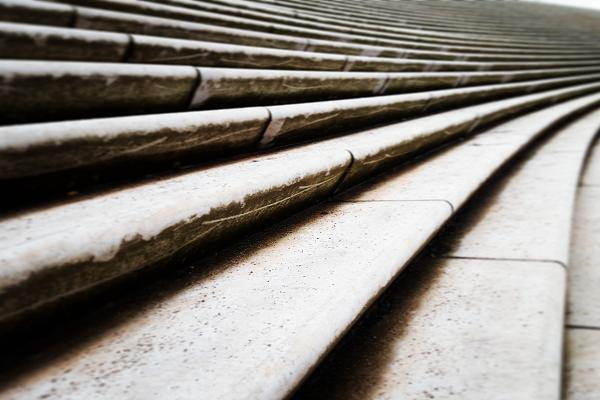The Bauhaus Museum: Walter Gropius (18 May 1883—05 July 1969) was a renowned German-American architect and academic authority who founded the Bauhaus in Weimar in 1919. The Bauhaus was an advanced academic institution focusing on applied arts, architecture, and design which conflated the teachings of the Weimar Academy of Arts and the Weimar School of Arts and Crafts.
Gropius’s overarching principle stemmed from and developed the ideas of the so-called arts-and-crafts movement of the late 19th century and of the English designer, reformer, and poet William Morris, who objected to the tastelessness and banality of the mass-produced products of the Industrial Revolution. The movement eventually gave rise to Art Nouveau (der Jugendstil) and later to the sublimity of Gropius’s Bauhaus, which blended art with technical expertise.
Gropius was a dreamer who summoned fellow dreamers with the closing paragraph of his manifesto: “So let us therefore create a new guild of craftsmen, free of the divisive class pretensions that endeavored to raise a prideful barrier between craftsmen and artists! Let us strive for, conceive, and create the new building of the future that will unite every discipline, architecture and sculpture and painting, and which will one day rise heavenwards from the million hands of craftsmen as a clear symbol of a new belief to come.”
The Bauhaus moved from Weimar to Dessau in 1925 and from Dessau to Berlin in 1932, but was ultimately banned by the Nazis. Early on 11 April 1933, the Nazis closed the Bauhaus just as the then director, Ludwig Mies van der Rohe, arrived for work. The reason given was that the Bauhaus contained a secret printing press used to oppose the Nazi regime.

Gropius ideas
Gropius promoted the idea that good design should be part of every aspect of daily living and rejected the notion that the creation of individual luxury goods should be paramount. Gropius realized that, if the combination of art with technical expertise were to influence all society in the 20th century, it would have to be combined with mass production, i.e., practical and beautiful objects for all society had to be designed with mass production in mind. Toward that end, Gropius included in-depth workshops—wall painting, carpentry, weaving, metal, graphics, pottery, typography, stained glass, and stagecraft—taught by accomplished, respected artists and craftsmen, e.g., Johannes Itten, Paul Klee, Josef Albers, Wassily Kandinsky, László Moholy-Nagy, Lyonel Feininger, Oskar Schlemmer, Marcel Breuer, Herbert Bayer, Gerhard Marcks, and Georg Muche. The entire undertaking was exhilarating and impressive and the more than 200 exhibits in the Bauhaus Museum in Weimar chronicle the intellectual fulfillment of Gropius’s farsighted ideas.
Highlights of the Bauhaus Museum
Given the size and diversity of the museum’s exhibits, I will highlight some of the more unusual and distinctive ones; however, bear in mind that my selection is highly subjective and that all the exhibits should be evaluated by visitors.
First on my list is the Tower of Fire, a glass sculpture by the abstract painter Johannes Itten. It is a glass spiral using leaded glass of the primary colors red, yellow, and blue and is an insightful attempt to represent the manifestation of a version of an ancient Persian religion, Mazdaznan, revived at the end of the 19th century by Otoman Zar-Adusht Ha’nish and is concerned with thought, emotion, and behavior. The sculpture is quite a bit more than that. It also signifies the unification of all the artistic and craft disciplines Gropius sought to link.
Gelmeroda XI by the German-American painter Lyonel Feininger is one of several Feininger studies (13 in oil over a fifty-year period) of the church in Gelmeroda, a suburb of Weimar. Feininger’s works are superb examples of German Expressionism, with their almost melodic coloring and seemingly uncontrolled orderliness (a seeming oxymoron that well describes a significant artistic ploy) and are fundamental examples of Feininger’s incorporating and furthering a sense of science, art, and technology in all his works.
Wilhelm Wagenfeld was an industrial designer known particularly for his sleek glassware and streamlined table lamps. His “Bauhaus Lamp” is still produced as is his glassware. He famously said that necessary household objects should be “. . . cheap enough for the worker and good enough for the rich.” Probably Wagenfeld’s most significant contribution to the classic elegance of the homes of both the rich and the not-so-rich is his teapot, which Jenaer Glass still produces (€142.50). As soon as you see it, you will recognize it.
The classic baby cradle of Peter Keler continues to awe and amaze new parents almost a century after Keler designed it in 1922―he was only 20 at the time―as a project given him by his Bauhaus tutor Wassily Kandinsky to incorporate the three primary colors: blue, red, and yellow, with the square, the triangle, and the circle―the geometric forms Kandinsky felt corresponded to the primary colors.
Finally, there are several examples of Bauhaus architectural plans. Take particular note of the plans submitted by Walter Determann in response to Gropius’s competition to provide a larger environment for the Bauhaus, which was always short of both workspace and living space. The campus designed by Determann came a cropper, but they incorporated every aspect for an ideal learning and living environment. Farkas Molnár contributed fascinating plans for an alternate Bauhaus campus on so-called Am Horn estate, just above Goethe’s Garden House. Gropius built a house on the site and it’s worth a visit. It is as modern as anything you might encounter in the world.
